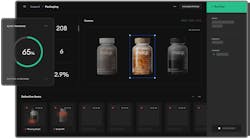Meet Emily Cash, the director of global EHS and regulatory compliance at Tecomet, a company that makes medical devices. Emily's got a ton of experience under her belt in safety, security, and emergency management, not to mention she knows her way around all sorts of agency rules. She used to be an OSHA compliance officer, and she's kept those connections alive to stay in the loop on what's happening in the regulatory world. Emily recently sat down for a chat with Dave Blanchard, Editor-in-Chief of EHS Today. They talked about the new digital demands that manufacturing companies are trying to keep up with to stay compliant and efficient. They also dove into how connected data and systems can give safety pros a leg up in managing EHS applications and processes.
Below is an excerpt from the podcast:
EHST: Let's talk a little bit about data, because that's kind of what we want to focus in on. So, I'll just start with a quick question. Quick question, but maybe not quick answer. What role does data play in your EHS program?
EC: It plays a large role in our EHS program. So, I think that when I started in EHS, we didn't look as much at things like leading indicators. We really depended on lagging data: last month’s incident rate, last month’s significant near misses, things like that. I think that data is taking on a much larger role in EHS because now, if we have so many near misses and then we have so many first aids, it's more likely that we're going to have this type of recordable. So, I really think that, whenever we look at our data, if we can look at it in real time and see what those leading indicators are, we could prevent an actual recordable or lost time injury.
EHST: I talk to a range of safety people from those who are extremely sophisticated and knowledgeable about all the technologies that they can be using to those who are asking, “Where do I start with this stuff?” So, the first big question would be how do you collect data, and what kind of data are you collecting? And then how do you manage it?
EC: I would say, like other manufacturers, we struggle with technology. We keep some stuff in shared spreadsheets. We keep some things on SharePoint. We have an EHS data management system, but other things tie into that as well. So, we have a lot of different operating systems as well as prehistoric spreadsheets that we all struggle to find.










